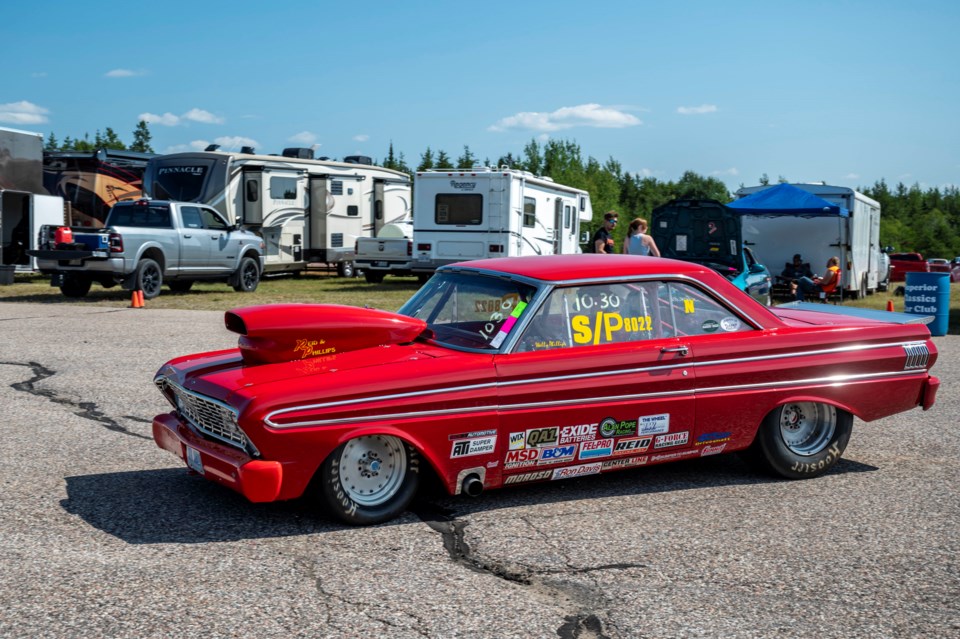THUNDER BAY — With plans for EDF Renewables to possibly build a solar farm on the former Terrace Bay Airport property, The Superior Classics Car Club annual Terrace Bay Drag Fest may only have three to five years left unless they can find a new race track.
Ray Gionet, the car club president and organizer of this year's 25th anniversary Drag Fest, said some of the racers suggested that the club reach out to Norm Nadin of Nadin Contracting to give him the club's support in building a drag race track in Thunder Bay.
Nadin has built the Thunder City Speedway dirt track.
"Most of our racers are from Thunder Bay and if we've only got three more years, it'd be nice to learn that he's working on his," Gionet said.
Nadin spoke with The Chronicle-Journal and said, "No, not even close. We don't have the room to build such a facility and we would never get permission for that at the Thunder City Speedway site."
Nadin added that he didn't know where in the city this type of race track could be built.
Drag strip racers, unlike dirt track racers, typically look for an old airport runway that has the pavement infrastructure to accommodate this style of racing.
Nadin speculated that a large parcel of land of at least half a mile, a quarter of it paved, concrete blockades, spectator stands, plus a camping area would cost around $5 million.
"You're basically building a highway," he said. "I don't see anybody investing that kind of money to have a facility that maybe you could run two events a year."
Gionet said when the club started drag racing in Terrace Bay, the airport was still operational.
"Actual planes were using the airport," he said. "When it was race time, the bleachers would be hauled in, all the concrete barriers would be put into place and then after the race, everything had to be all picked up and put away. Since the airport isn't operating anymore, we were able to leave everything in place except our electronics, timing system and scoreboards, which we set up every year."
Another challenge facing the club is the dwindling volunteers.
Gionet pointed out that it's one thing to have the facility but they need volunteers to prepare the track. This involves setting up the electronics and timing system, applying a glue to the launch area, tarring and maintaining the return road from the end of the track.
"We have seven volunteers, all in our 60s and 70s, and we've got one guy in his 50s left to set up and organize the track," Gionet said.
"We have a lot of the volunteers that show up to run to help run the races, but we've got no young blood coming on board to get the track ready.
"We're hanging together, and we keep running the races. So as long as that keeps happening, we're good, but the writing's on the wall."
In the past 25 years, the club has raised more than $500,000, which has been donated to hospitals, fire departments, schools, food banks, Christmas Cheer, individuals in crisis and other charitable organizations.
A small portion of the money stays with the club for insurance, maintenance, materials, glue and event purposes.
Should the races have to shut down in three or more years, racers will likely travel to Minnesota, Illinois and Wisconsin for competitions.
The Chronicle Journal / Local Journalism Initiative
